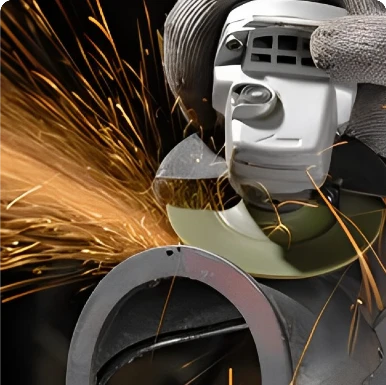Understanding Grinding Wheels Pricing Factors and Market Trends
Grinding wheels are essential tools in various industries, including manufacturing, metalworking, and construction. Their primary function is to grind, cut, and shape materials, making them crucial for precision machining. As technology evolves and manufacturing processes become increasingly sophisticated, the demand for high-quality grinding wheels continues to rise. This demand inevitably impacts pricing, which can fluctuate based on several factors.
1. Material Composition
The type of material used in the construction of grinding wheels significantly influences their price. Grinding wheels are typically made from abrasive materials like aluminum oxide, silicon carbide, diamond, and cubic boron nitride. Each type of abrasive has distinct properties suited for specific applications. For example, diamond wheels, known for their durability and effectiveness in grinding hard materials like ceramics and carbide, tend to be on the higher end of the price spectrum. Conversely, more common abrasives such as aluminum oxide and silicon carbide are generally less expensive.
2. Wheel Size and Specifications
The dimensions and specifications of grinding wheels also play a critical role in determining their price. Larger wheels or those with specialized dimensions tailored for specific equipment usually command higher prices, as they require more raw materials and tend to be custom-made. Furthermore, wheels designed for intricate tasks, such as those with finer grits or unique shapes, may also be more costly. Customers should consider their specific needs and the compatibility of wheels with their machinery when evaluating prices.
The methods used to manufacture grinding wheels can affect production costs, thereby influencing retail prices. Traditional manufacturing processes are often more labor-intensive and time-consuming, which can lead to higher prices for the final product. Conversely, advancements in technology, such as automated production lines, can help lower costs, resulting in more competitively priced grinding wheels. Buyers should be aware that while automated wheels may be less costly, they should not compromise on quality or performance.
grinding wheels price

4. Market Demand and Trends
The demand for grinding wheels is closely linked to trends within the manufacturing and construction industries. For instance, as construction projects surge or manufacturing output increases, the demand for grinding wheels is likely to rise, driving up prices. Conversely, economic downturns or industry slowdowns can lead to decreased demand, resulting in lower prices. Observing market trends and anticipating shifts can help businesses strategize their purchases effectively.
5. Brand Reputation and Quality
Brand reputation plays an essential role in the pricing of grinding wheels. Reputable brands that are known for their quality and reliability will often command higher prices. While it may be tempting to choose cheaper alternatives, investing in well-regarded brands can result in better performance and longer-lasting tools, ultimately providing better value over time. Companies should weigh the cost of initial investment against the potential benefits of quality and durability.
6. Distribution and Supply Chain Factors
The distribution and supply chain involved in the procurement of grinding wheels can also impact their prices. Factors such as transportation costs, tariffs, and supplier relationships can contribute to pricing variations. For businesses looking to maintain a steady supply of grinding wheels, establishing reliable supplier relationships and considering local sources may help mitigate on-site procurement costs.
Conclusion
In summary, the pricing of grinding wheels is influenced by a combination of material composition, wheel specifications, manufacturing processes, market demand, brand reputation, and supply chain factors. Businesses must evaluate these aspects to make informed purchasing decisions. As the industry continues to evolve, staying updated on market trends and technological advancements is crucial for optimizing the use of grinding wheels and ensuring cost-effectiveness. By understanding the intricacies of grinding wheel pricing, buyers can better navigate their options, securing the best tools for their cutting and grinding needs without compromising on quality or performance.
Post time:Nov - 27 - 2024

















